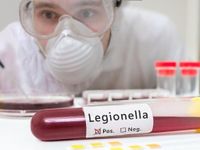A deadly outbreak of Legionnaires’ disease has gripped Central Harlem in New York City this summer, leaving five people dead and more than one hundred others sickened, according to city health officials. The crisis, which began in late July 2025, has exposed vulnerabilities in the city’s public health safeguards and prompted both urgent remediation efforts and political debate about prevention and accountability.
The New York City Department of Health and Mental Hygiene confirmed the fifth death late Monday, August 18, 2025, bringing the total number of confirmed cases to 108, with 14 people still hospitalized. The outbreak was first detected on July 25, 2025, and quickly spread across five Harlem ZIP codes—10027, 10030, 10035, 10037, and 10039—impacting not just residents but workers and visitors to the area as well, as reported by Patch and AFP.
Legionnaires’ disease, a severe form of pneumonia, is caused by the Legionella bacterium, which thrives in warm water environments. In this case, the culprit was traced to 12 contaminated cooling towers atop 10 buildings, including city-run facilities such as a hospital, a sexual health clinic, and a CUNY building. These towers, which use water and fans to cool the air inside buildings, can become breeding grounds for bacteria if not properly maintained. According to the New York City Health Department, “Any cooling towers with initial positive results for Legionella bacteria have completed the treatment required by the Health Department.”
Officials were quick to emphasize that the outbreak was not related to building plumbing systems—meaning tap water, showers, and air conditioning in homes remain safe to use. Instead, the disease spread through tiny contaminated droplets released from the cooling towers into the air, which people then inhaled. “New Yorkers should know the air is safe to breathe, and we are seeing declining numbers of new cases each day,” said Mayor Eric Adams last week, attempting to reassure a jittery public.
Symptoms of Legionnaires’ disease typically appear between two and 14 days after exposure and can include cough, fever, chills, muscle aches, headaches, shortness of breath, and sometimes confusion or diarrhea. The disease is not contagious from person to person, but it can be deadly if not diagnosed and treated promptly. Acting Health Commissioner Dr. Michelle Morse explained, “The good news is that new cases have begun to decline, which indicates that the sources of the bacteria have been contained.” Morse also noted that the fifth death actually occurred in July but was only recently confirmed as caused by Legionnaires’ disease as investigations continued.
Health officials have repeatedly urged anyone who lives or works in the affected area and develops flu-like symptoms to seek medical attention immediately. “If you have flu-like symptoms, seek medical attention right away,” the Department of Health urged on its website and in public statements. While the disease is particularly dangerous for people over 50, smokers, those with chronic lung conditions, or weakened immune systems, it can affect otherwise healthy individuals as well.
Remediation efforts have been swift. All 12 cooling towers that tested positive for Legionella have been fully drained, cleaned, and disinfected as of mid-August. Inspectors are now working closely with building owners to ensure ongoing compliance with city regulations, which require cooling towers to be tested for Legionella every 90 days. Still, the outbreak has sparked frustration among Harlem residents and local advocates, particularly because several of the contaminated towers were atop city-owned buildings and because only about 1,200 cooling towers were inspected for Legionella in the first half of 2025—compared to nearly 5,100 in the same period in 2017, according to data from the city Department of Health cited by the New York Post.
The city’s handling of the crisis has drawn both defense and criticism from political leaders. Governor Kathy Hochul, speaking at an unrelated event in Rome, NY, on Tuesday, August 19, 2025, said, “This is a challenge for the city. Of course responsibility and mitigation are solely within their purview. We respect that, but we are monitoring this intensely and offering any kind of assistance. So we’re here in a supportive role, but I’m concerned. I’m concerned.” When pressed on whether stricter inspection rules or penalties for building owners should be considered, Hochul responded, “I’ll determine the right approach on that if there is a legislative solution. But these happen in communities unexpectedly. I don’t know how you can prevent it, but monitoring water wells is certainly one path to do that.”
Some Harlem residents and local leaders have expressed outrage that the city initially withheld the addresses of the affected buildings, sharing only ZIP codes even as infections rose. Health Commissioner Michelle Morse defended the decision, arguing that keeping the focus on vigilance citywide was more effective, though the city later released a list of contaminated buildings, including city-run properties and well-known community centers.
While the current outbreak has been severe, it is not the first time New York City has faced a Legionnaires’ crisis. Between 200 and 700 New Yorkers are diagnosed with the disease each year. In the summer of 2022, five people died in a Manhattan nursing home outbreak, and in 2015, cooling towers at the Opera House Hotel in the South Bronx infected more than 100 people and killed 12. These recurring outbreaks highlight the persistent risk posed by aging infrastructure and the challenge of enforcing public health regulations in a city as vast and complex as New York.
Officials have repeatedly stressed that the outbreak is now under control, with new cases declining. “Based on epidemiological evidence, remediation efforts have been effective as new cases continue to decrease,” said Acting Health Commissioner Morse. Still, the episode has raised pressing questions about whether the city’s inspection and prevention efforts are sufficient and whether more transparency and stricter enforcement are needed to protect residents in the future.
As the city recovers from this summer’s deadly outbreak, Harlem residents and New Yorkers at large are left to weigh the lessons learned—and to consider how best to prevent history from repeating itself.

